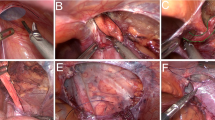Abstract
Background The treatment of cryptorchidism has changed, with surgery now advocated before the age of two years. Delayed treatment affects fertility, malignant potential and psychological stress.
Aims To assess the pattern of referral of cryptorchid patients to a surgical clinic, management and follow-up.
Methods A four-year review of 114 cryptorchid patients examined age at presentation, waiting time, timing of surgery and length of follow-up.
Results The mean age at presentation to the surgical clinic was 6.7 years (neonatal to 71). The mean age at orchidopexy was 5.6 years. Seventy per cent had a surgical procedure within eight weeks of presentation to a surgeon. Seven per cent were kept under surveillance until a maximum age of three years before orchidopexy was considered. Only 29% proceeded to surgery before the age of two. Seventeen were referred to a paediatric urology unit for further management.
Conclusions Orchidopexy seems prudent between one and two years of age. Only one-quarter of patients underwent early orchidopexy. It is vital that it is detected early, by paediatricians at birth or the general practitioners (GPs) at the six-week check up. Prompt referral to a surgeon with a paediatric interest is essential in order to permit surveillance or surgery.
Similar content being viewed by others
References
Gill B, Kogan SJ. Cryptorchidism: current concepts.Pediatr Clin North Am 1997; 44(5): 1211–27.
Dawson C, Whitfield H. ABC of urology. Common paediatric problems.BMJ 1996; 312(7041): 1291–4.
Hadzieselimovic F, Herzog B, Buser M. Development of cryptorchid testes.Ear J Pediatr 1987; 146 (suppl 2): 8.
Puri P, O’Donnell B. Semen analysis of patients who had orchidopexy at or after seven years of age.Lancet 1988; 2: 1051.
Garcia J, Gonzalez N, Gomez ME et al.Br J Urol 1995; 75 (6): 697–701.
Pike MC, Chilvers C, Peckham MJ. Effect of age at orchidopexy on risk of testicular cancer.Lancet 1986; 1 (8492): 1246–8.
Depue RH, Pike, Henderson BE. Cryptorchidism and testicular cancer.J Natl Cancer Inst 1986; 77 (3): 830–3.
Kogan SJ. Fertility in cryptorchidism: an overview in 1987.Eur J Paediatr 1987; 146: 21.
Cilento BG, Najjar SS, Atala A. Cryptorchidism and testicular torsion.Pediatr Clin North Am 1993; 40 (6): 1133–49.
Pottern LM, Brown M, Hoover RN et al. Testicular cancer risk among young men: role of cryptorchidism and inguinal hernia.J Natl Cancer Inst 1985; 74: 37.
Woodhouse CRJ. Late malignancy risk in urology.Br J Urol. 1992; 70: 345–51.
Davenport M. ABC of general paediatric surgery. Inguinal hernia, hydrocoele, and undescended testis.BMJ 1996; 312 (7030): 564–7.
Author information
Authors and Affiliations
Corresponding author
Rights and permissions
About this article
Cite this article
Lim, K., Casey, R., Lennon, F. et al. Cryptorchidism: A general surgical perspective. Ir J Med Sci 172, 139–140 (2003). https://doi.org/10.1007/BF02914500
Issue Date:
DOI: https://doi.org/10.1007/BF02914500




